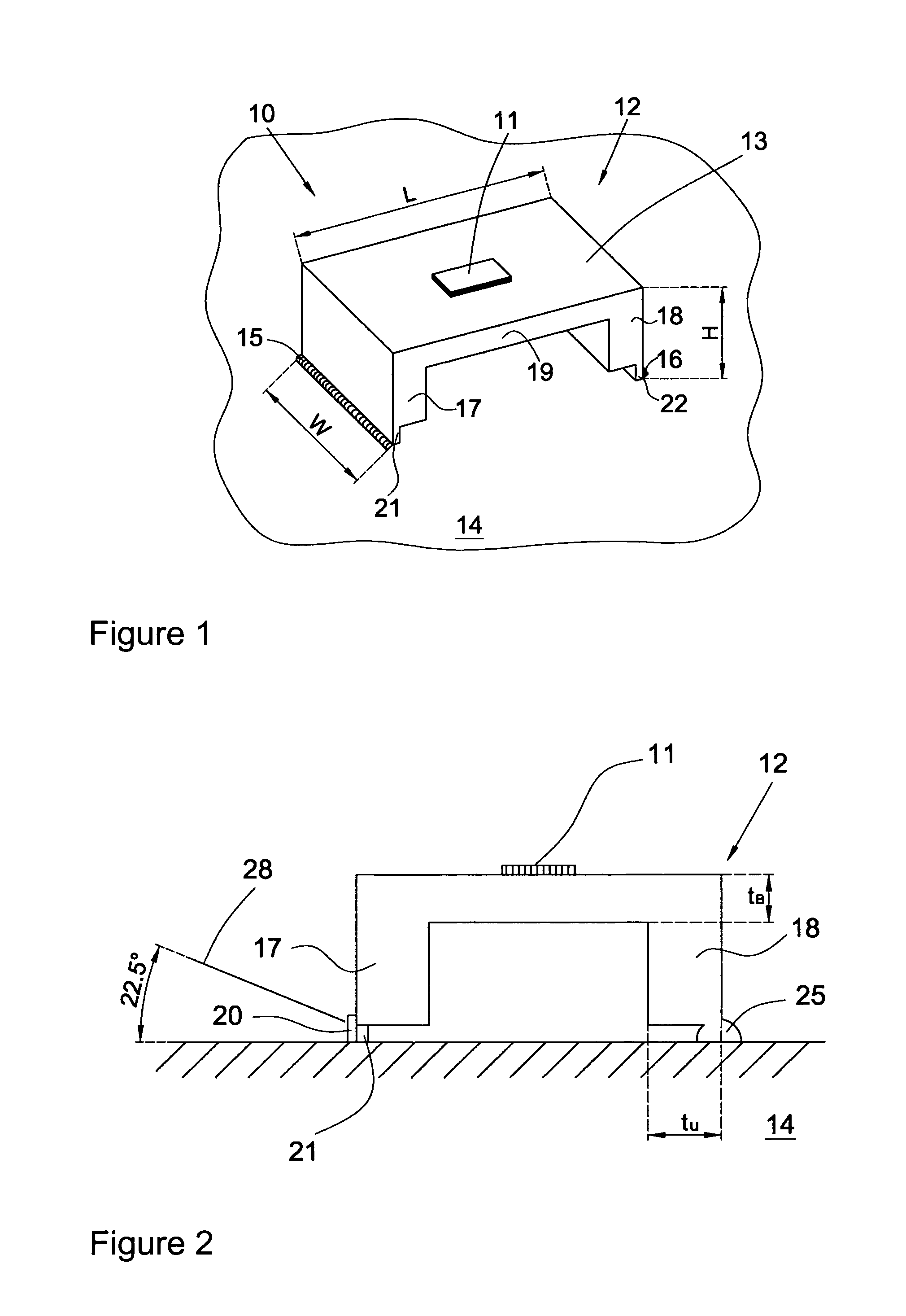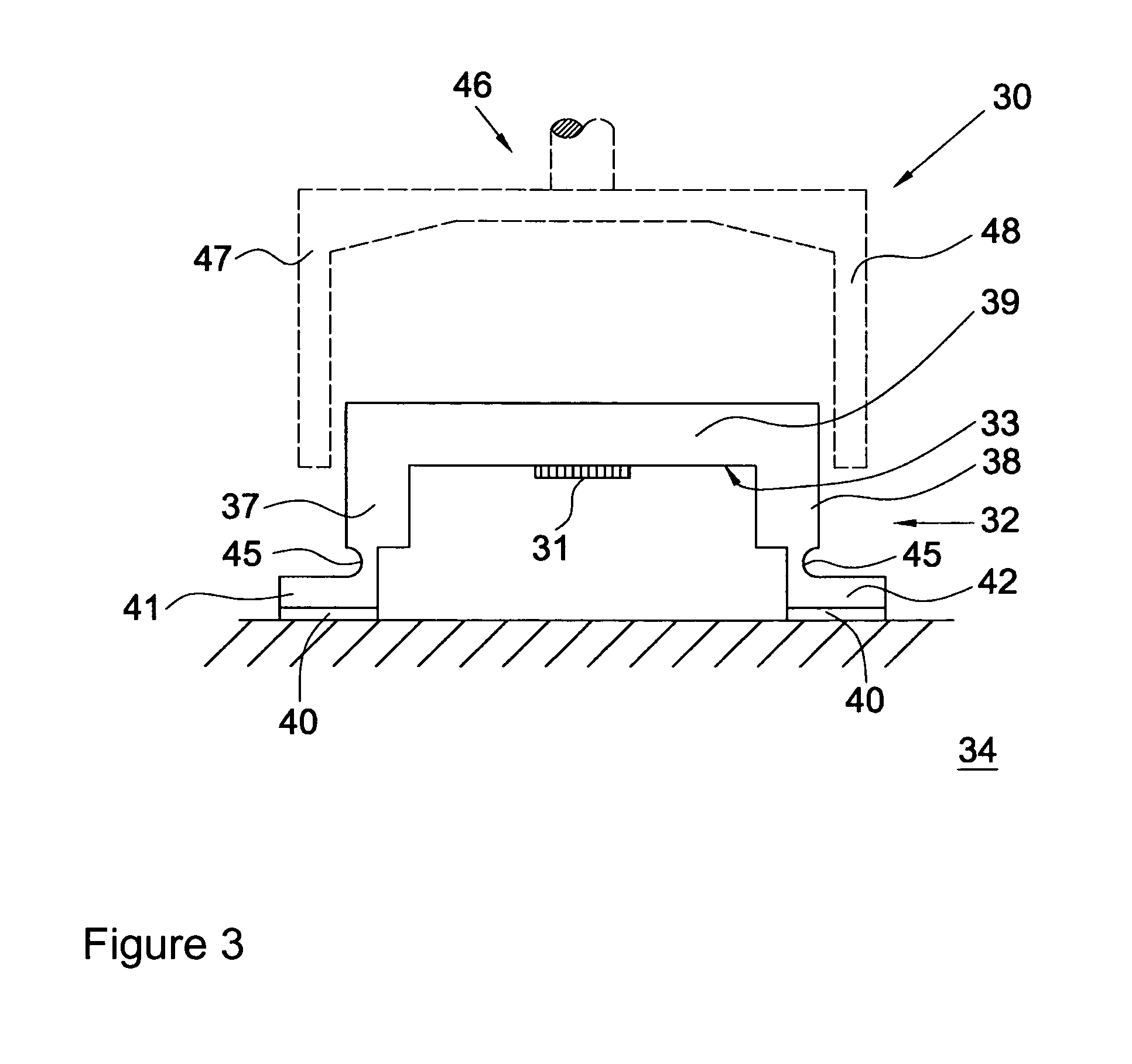Strain sensor
a technology of bending sensor and sensor, which is applied in the direction of mechanical measuring arrangement, instruments, force/torque/work measurement apparatus, etc., can solve the problems of sensor signal reliability degradation, sensor unsuitable for automated mounting and integration in a production-line environment, and adhesive subject matter, etc., to achieve strong and stable bending response
- Summary
- Abstract
- Description
- Claims
- Application Information
AI Technical Summary
Benefits of technology
Problems solved by technology
Method used
Image
Examples
Embodiment Construction
[0032]When there is a need to measure the loads acting on a rotationally supported component, one way of accomplishing this is to measure deformation of a bearing ring in a bearing that is used to support the component. The loads cause the bearing ring to deform, which deformation can be measured by attaching one or more strain sensors to a surface of the bearing ring, e.g. an outer circumference of the bearing outer ring. Strain sensors, such as plastic-foil strain gauges, can be adhesively bonded to the bearing surface, but adhesive bonding is a time-consuming process that is usually carried out manually. A further drawback is that over time, the adhesive can be subject to creep, which impairs the reliability of the strain signal over time. Metal-foil strain gauges can also be applied, whereby the perimeter of the metal foil gauge is welded to the bearing surface using a specific pattern of spot welds. Thus, the spot welding process is relatively time-consuming and complex. Foil s...
PUM
| Property | Measurement | Unit |
|---|---|---|
| angle | aaaaa | aaaaa |
| angle | aaaaa | aaaaa |
| welding angle | aaaaa | aaaaa |
Abstract
Description
Claims
Application Information
 Login to View More
Login to View More - R&D
- Intellectual Property
- Life Sciences
- Materials
- Tech Scout
- Unparalleled Data Quality
- Higher Quality Content
- 60% Fewer Hallucinations
Browse by: Latest US Patents, China's latest patents, Technical Efficacy Thesaurus, Application Domain, Technology Topic, Popular Technical Reports.
© 2025 PatSnap. All rights reserved.Legal|Privacy policy|Modern Slavery Act Transparency Statement|Sitemap|About US| Contact US: help@patsnap.com



